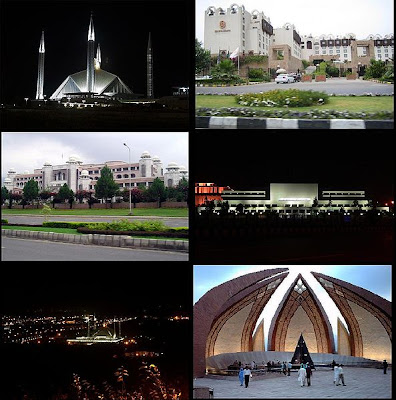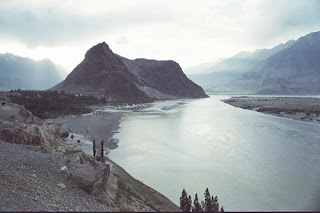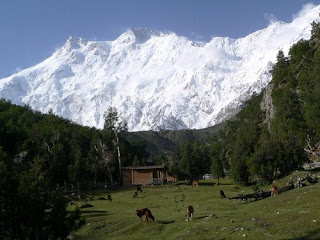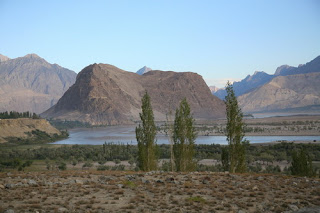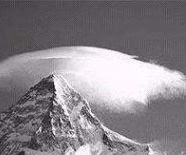
Benazir Bhutto (1953- ), Pakistani political leader, who served as first female prime minister of a Muslim country, she served for Pakistan from 1988 to 1990 and from 1993 to 1996. Born into a wealthy landholding family with a tradition of political activism in southeastern Sindh province, Bhutto enjoyed a privileged childhood
Bhutto was educated at Harvard's Radcliffe College in the United States and at the University of Oxford in England, where she excelled in studies as well as other activities including debating competitions, she was the first Asian woman to be elected president of the Oxford Union. The daughter of a intelligent and Charismatic Prime Minister Zulfikar Ali Bhutto (1971-1977), she returned to Pakistan in june 1977, planning on a career in the foreign service. But only two weeks later, however, military officers led by General Muhammad Zia-ul-Haq , capitalizing on public protests of disputed parliamentary elections overthrew Prime Minister Zulfikar Ali Bhutto in a bloodless coup. Benazir Bhutto spent the next eighteen months in and out of house arrest as she struggled to rally political support to force Zia to drop fallacious murder charges against her father. The military dictator ignored worldwide appeals for clemency and had Zulfikar Bhutto hanged in April of 1979.
Bhutto's persecution began in earnest after the dismissal of her father's government in 1977 and his execution in 1979 as she intensified her denunciations of Zia and sought to organize a political movement against him. Repeatedly put under house arrest, she was finally imprisoned under solitary confinement in a desert cell in Sindh province during the summer of 1981. Bhutto described the hellish conditions in her wall less cage in "Daughter of Destiny":
"The summer heat turned my cell into an oven. My skin split and peeled, coming off my hands in sheets. Boils erupted on my face. My hair, which had always been thick, began to come out by the handful. Insects crept into the cell like invading armies. Grasshoppers, mosquitoes, stinging flies, bees and bugs came up through the cracks in the floor and through the open bars from the courtyard. Big black ants, cockroaches, seething clumps of little red ants and spiders. I tried pulling the sheet over my head at night to hide from their bites, pushing it back when it got too hot to breathe."
Released in 1984, she went into exile in Britain until 1986, when martial law was lifted in Pakistan.She returned with a huge crowd numbering in the hundreds of thousands turned out on the streets to greet her, by then the leading symbol of the anti-Zia movement, when she returned to Lahore in April of 1986. Formally elected chair in the following month, Bhutto lost no time in organising mass protests and civil disobedience campaigns to pressure Zia to relinquish office and call national elections. Bhutto's stirring oratory, familiar name, and striking appearance helped give her a strong mass appeal, but she had to struggle to wrest real power from the PPP's old-guard leadership, members of which were wary of her gender, youth, and political wisdom. Supported by tumultuous crowds, Bhutto again called for fresh elections, resulting in another short prison term that same year. She also had to contend with internal dissension among the anti-Zia forces.
In 1988 Zia was killed in an airplane crash, less than three months after announcing that elections would take place. In the November elections the PPP gained a huge popularity in the National Assembly, and in December 1988 Bhutto, 35 only became prime minister of Pakistan, the first woman to hold this office in any modern Islamic state. During her first term, Her objective was to return Pakistan to civilian rule and oust the men who executed her father, she also started Peoples Program for economic uplift of the masses. Benazir Bhutto lifted a ban on student and trade unions. The PPP. Government hosted the fourth S. A. A. R. C. Summit held in Islamabad, in December 1988.
In August 1990, however, President Ghulam Ishaq Khan dismissed her, charging her with incompetence and corruption. ,The President and the Caretaker Prime Minister filed a series of references against Mohtarma Benazir Bhutto. Her husband, Mr. Asif Ali Zardari was arrested and imprisoned for over two years on a number of up charges.
Her party was soundly defeated in the elections that followed in November 1990, and Bhutto became an opposition leader in the parliament. Subsequent attempts to oust the ruling party resulted in Bhutto’s deportation to the city of Karachi in 1992, and she was temporarily banned from entering Islamabad, the capital of Pakistan.
Addressing at UN
In July 1993, the President of Pakistan dismissed the Government of Prime Minister Mian Nawaz Sharif on corruption charges and called for fresh elections. The Pakistan Peoples Party went to the people in October, 1993 with a new "Agenda for Change". The programme envisaged government at the door-step of the people and priority to the social sectors. Mohtarma Benazir Bhutto was again elected Prime Minister with a broad mandate after achieving strong popular support in all the four provinces of Pakistan .
Bhutto's platform has been leftist, including food for the hungry, health care, jobs, slum clearance and a monthly minimum wage.
She has been opposed by Islamic fundamentalists who have been suspicious of the PPP because of its alleged leftist.
Due to Benazir’s Personal world popularity, during her term Pakistan’s relation with other countries improved ,her moderate foreign policy had been credited for improving the wrong image of Pakistan around the world ,however domestically she and her party have been widely blamed for excessive corruption.
Benazir again faced trouble from the opposition. In the autumn of 1994, Nawaz Sharif led a "train march" from Karachi to Peshawar. This was followed by general strike on September 20. Two weeks later Nawaz Sharif called a "wheel jam" strike on October 11.
Bhutto was dismissed from office for the second time in late 1996. In October, large street demonstrations shut down the capital, and Bhutto aroused criticism when she had arrested several rival party leaders who had participated in the demonstrations.
Bhutto came under pressure from the press and public, who charged her government with corruption and mismanagement. On November 5, 1996, President of Pakistan Farooq Leghari dismissed Prime Minister Bhutto and dissolved the National Assembly.
Bhutto's husband, Zardari, was the focus of much of the criticism. She had appointed him to the cabinet post of investment minister. He was accused of taking bribes and pocketing money from government contracts. President Leghari also charged that Zardari was responsible for "extrajudicial killings" in Karachi, where Bhutto rivals had been killed by police.She denounced all charges as politically motivated, and went into self-imposed exile. In 2001 the Supreme Court of Pakistan suspended a high court’s 1999 conviction of Bhutto, ordering a retrial, but in a separate trial Bhutto was sentenced in absentia to three years in prison. She is currently still in self-exile in London and faces charges if she returns back.
She has been mentioned as "The world's most popular politician" in the New Guinness Book of Record 1996.
The "Times" and the "Australian Magazine" (May 4, 1996) have drawn up a list of 100 most powerful women and have included Benazir Bhutto as one of them.
She has received many honoury degrees and awards from several countries.
She also lectures and takes part in several major world events.
Publications
Benazir Bhutto is the author of two books "Foreign Policy in Perspective" (1978) and her autobiography, "Daughter of the East" (1989). Several collections of her speeches and works have been compiled which include "The Way Out", Pakistan Foreign Policy, Challenges and Responses in the Post-Cold War era in "After the Cold War" by Keith Philip Lepor and Male Domination of Women offends her Islamic religion in "Lend Me Your ears: Great Speeches in History" by William Saffire. "The Way Out" (1980). She has also contributed to many periodicals and to the books, "Predictions for the Next Millennium" by Kristof and Nickerson and "Book of Hopes and Dreams" published by Bookmaster Inc.
AWARDS AND HONORARY DRGREES
Bruno Kreisky Award of Merit in human Rights, 1988.
Honorary Phi Beta Kappa Award (1989), presented by Radcliffe College.
Highest Moroccan Award "Grand Cordon de Wissam Alaoui"
Highest French Award "Grand-croix de la Legion Honneur" (1989)
The Noel Foundation Award, 1990 (UNIFEM).
The Gakushuin Honorary Award, Tokyo (1996)
Award by the Turkish Independent Industries and Businessmen Association (MUSAID) on account of providing assistance to the people of Bosnia.
Golden medal Dragon of Bosnia awarded by President of Bosnia (1996)
Key to the city of Los Angeles, presented by the Mayor of Los Angeles (1995)
Presidential Medal, Paul Nitze School of Advanced International Science (1995)
Medal by University of California at Los Angeles (1995)
Honorary Doctorate of Law, L.L.D Harvard University (1989)
Honorary Doctorate of Law (Honoris Causa), University of Sindh (1994)
Honorary Doctorate from Mendanao State University, Philippines (1995)
Honorary Doctorate of Law (Honoris Causa), Peshawar University (1995)
Honorary Doctorate of Economics, Gakushuin University, Tokyo (1996)
Honorary Fellowship by Lady Margaret Hall, University Oxford, (1989)
Honorary Fellowship by St. Catherine College, University of Oxford, (1989)
Honorary Professor of the Kyrghyz State National University (1995) Kyrghyzstan.
Honorary Professor of Yassavi Kazakh Turkish University, Kazakh-Turkish International Language University, Kazakhstan, 1995.
Honorable Member of OHYUKAI, Alumni Association of Gakushuin, conferred by OHYUKAI Tokyo (1996).
Awarded the 2000 Millennium Medal of Honor by American Biographical Institute, Inc. in November 1998. Awarded American Academy Award of Achievement in London, October 28, 2000

 8:45 AM
8:45 AM
 Developers Web
Developers Web

